As the lightning-fast Sinkansen – that day, it happened to be a perfect Hello Kitty edition with pink and white cars and purple plush seats – pulled into Okajama train station, I pulled out the sketch my Airbnb host, Mr Takaaki, had sent me of the road to the house. A few minutes later, I was standing in front of a drawn shutter covering a sweet shop that was closed that day. If it hadn’t been for the instructions, which were clearly written in a translation program, that the entrance only looked shuttered, I might have been alarmed, but I took off the padlock, pulled up the shutter and walked up the staircase next to the shop to the second floor. There I used the code from the letter to open the key safe and was inside Mr Takaaki’s apartment. I didn’t find out where he had been staying during those few days, as we had never met, but there was tea, coffee, some sweets on the dining table and an exhaustive English-language instruction manual next to the household appliances.
Airbnb
Nowhere in the world have I met hosts as attentive as in Japan. One reason for this may be that since June last year, the rules on short-term rentals have been tightened up and only officially licensed homes can be listed on accommodation sites. This has reduced to a fraction of the number of rooms previously available, but those who have stayed on the grid are old and enthusiastic members. On the other hand, the Japanese hosts are well aware that for us the country is like a distant planet, so there are English signs next to all the switches. They’re necessary, because it’s often an art to find the right button to flush the toilet, with a control panel that rivals a cockpit. My most thoughtful host was in Osaka, who left a 36-page guide on the desk. He covered everything from how to use household appliances to seasonal programmes to the main attractions – the latter with opening times and a small map of the route.
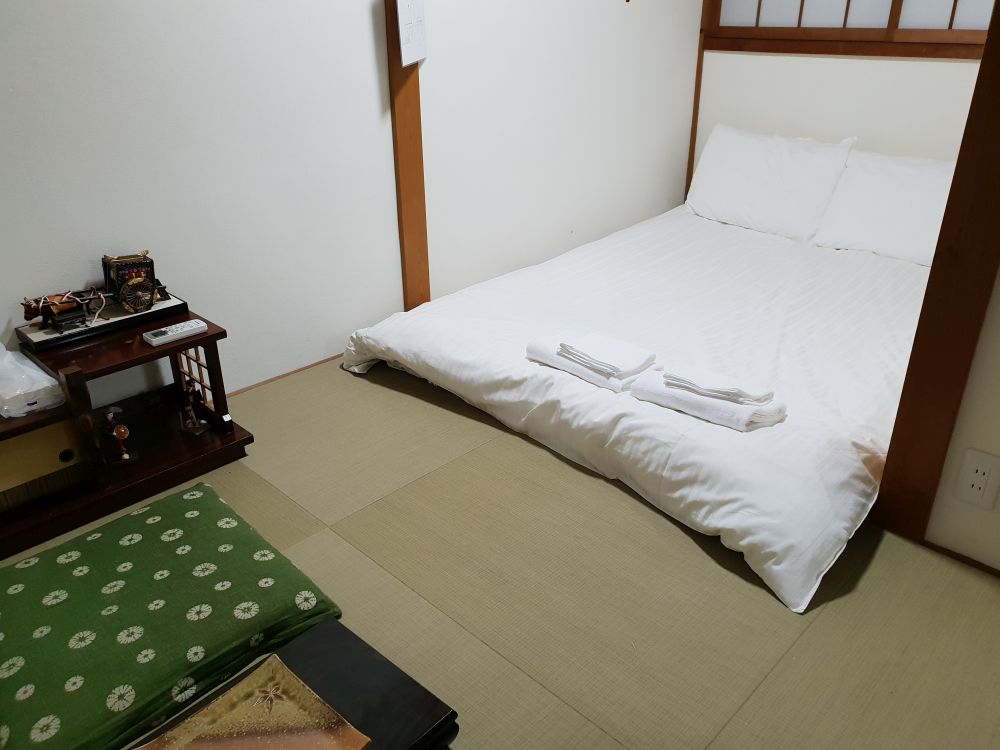
Luxury hotel
Well, let’s start at the beginning. My month and a half tour of Japan started in Tokyo, and as soon as the idea for the trip was born, it was clear that I wanted to stay at the Park Hyatt Tokyo. It was here that the film The Lost Report was shot, and for me it best captures the atmosphere of Japan. It is perhaps incomprehensible in retrospect, but the hotel management at the time was not at all happy about the filming and only reluctantly and minimally helped with the film. Legend has it that the crew members were only allowed to film in their own rooms, and the bar was only used after closing time, with extras and a band. Yet even after a decade and a half, the film still attracts countless visitors to the hotel, who order from the bar and say: ‘I’d like what Bill Murray had! (It’s a Japanese whisky, by the way, Hibiki 17 Year Old.) Why did the management shy away from the hype? Simply for the peace of mind of the guests staying there, which can never be overridden here by the fact that some celebs want to make a movie. This is not Hollywood.
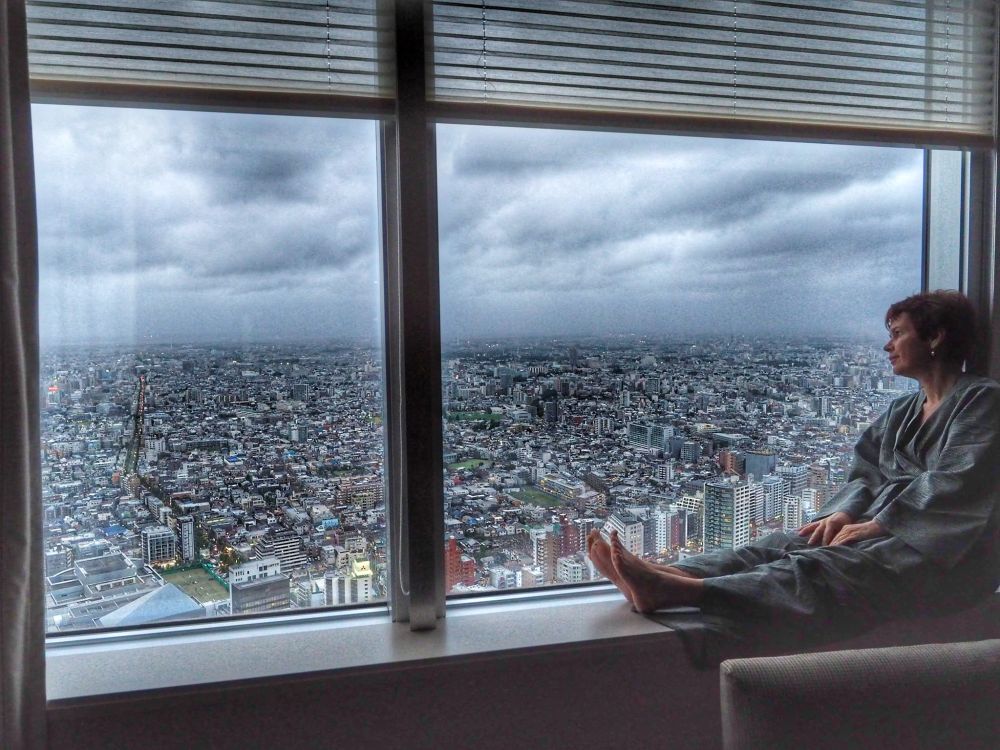
My calculation was right, as I was as jet-lagged as the main characters in the film, and as mesmerised as they were by the night city from the top-floor bar. What’s more, I was not only jet-lagged, I was exhausted because I had caught a typhoon. On the first day of my trip, the biggest typhoon in decades hit the country, and although its epicentre was near Osaka, it had an impact on Tokyo. And not wanting to miss a full day of my planned itinerary, I braved the gale-force winds and walked around the city streets at a 45-degree angle. The next morning, the receptionist kindly asked me if I had felt the earthquake during the night. “No”, I replied sleepily, “I was so tired from the typhoon that I didn’t even wake up to the earthquake”. Such a conversation can only take place in Japan, where, unfortunately, both natural disasters are commonplace.
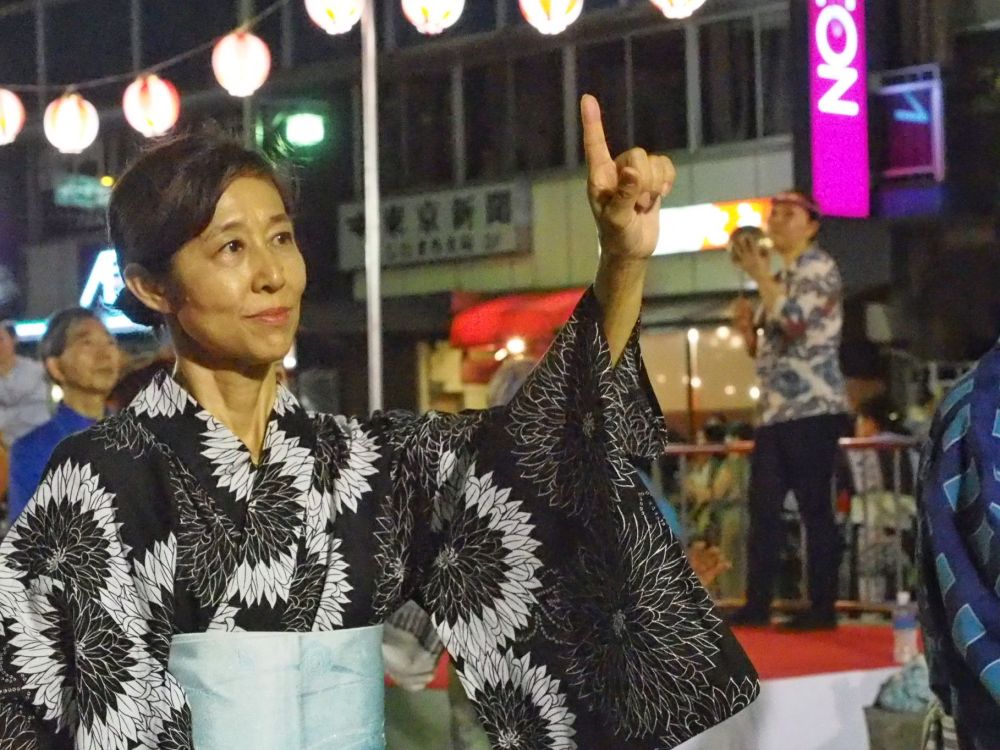
I had been to Japan once before, a good 15 years ago, but as a regular tourist I was mainly focused on the sights. I ticked off the major sights, but still came home with a strong sense of lack. I realised that Japan is not just about the famous temples and gardens, but also about all the little quirks that make it so elusive to us Europeans. So now I set out to visit remote little villages and try as many ‘Japanese things’ as possible – experiences, food and accommodation.
Capsule hotel
That’s how I took the liberty of staying in a capsule in Osaka. In Japan, where space is at a premium in the cities, a very special form of hostel has become common: the capsule hotel. In a large room, you have to imagine a long row of identical chairs, each with a single mattress, and the guest can just sit up without hitting his head. In capsule hotels, men and women always sleep in separate rooms, and couples and families are divided by gender. Not recommended for honeymooners.
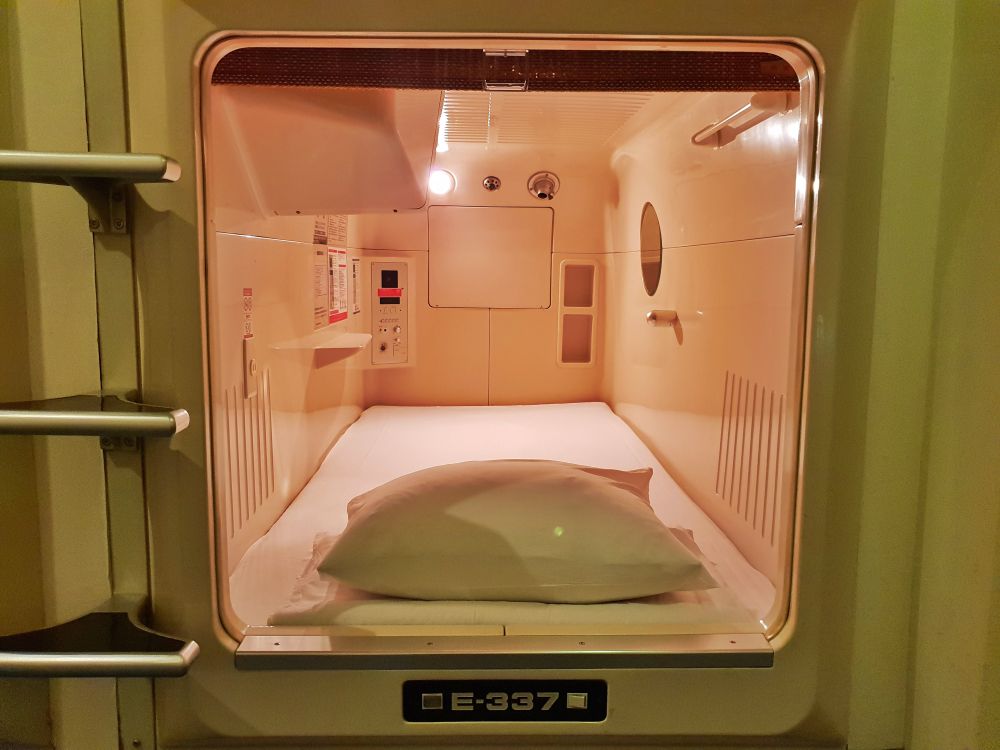
There is no room for luggage in the tiny cabin, it must be left in a separate locker. But they are not really needed. These quirky hotels were originally designed for businessmen who miss the last train because of overtime or a long company party and suddenly have to find accommodation. Accordingly, the capsule comes with everything you need for a night’s stay: pyjamas, towels, slippers, a disposable toothbrush and a large shared bathroom with everything you need. All these hotels also have a comfortable lounge and coin-operated washing and drying machines. You can return to work in the morning clean and refreshed.
It was exactly what I expected. Clean and tidy, thought out and organised down to the smallest detail. Yet I slept restlessly, the conversation, comings and goings of my bunkmates, the snoring of the bedmates, echoing into every capsule, for there are no doors, only curtains or blinds. Even in the upmarket “First Cabin” capsule hotels, but at least there the small cubicles are slightly larger. As well as a strictly single bed, there is room for luggage, and the ability to stand up is a real luxury.
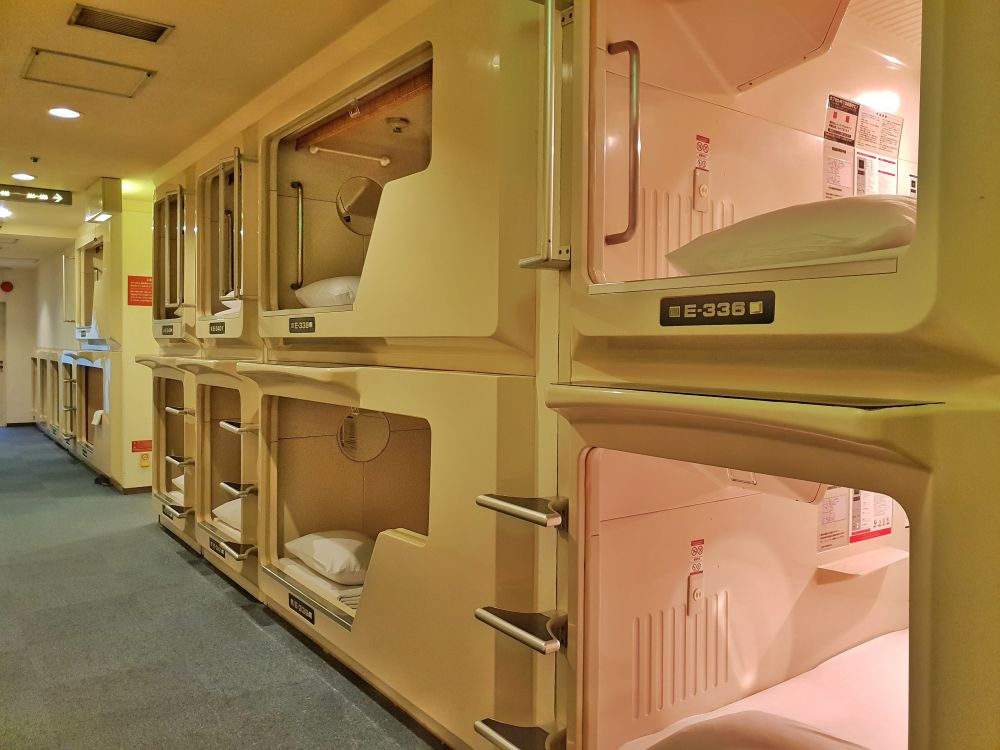
The work-obsessed Japanese also use other, equally unusual places to sleep. While internet or manga cafés are primarily designed for entertainment, many people also use private boxes for napping. This is so common that they are equipped with showers and tea kitchens. I didn’t take it for sleeping, I just popped in to take photos, as I did in a love hotel in Kyoto.
Love hotel
The love hotels are difficult to find, as they are typically not listed on any of our usual English-language accommodation search sites. I stumbled upon one by accident when I was looking for an authentic market in Kyoto based on a food blog. The next challenge was communication, being a real Japanese, the staff at the Love Hotel usually don’t speak English. In addition, I couldn’t rely on pointing and gesticulation because I couldn’t see the receptionist herself. For the sake of discretion, there is only a tiny window between the guest and the concierge, who gives out the key and the customer slides in the money. Using the translator on my mobile phone, I finally managed to explain what I was doing, so I was free to take photos in any room where the red light above the door was not on. This was a useful warning not to open a room where, in the rush, they had forgotten to lock the door themselves.
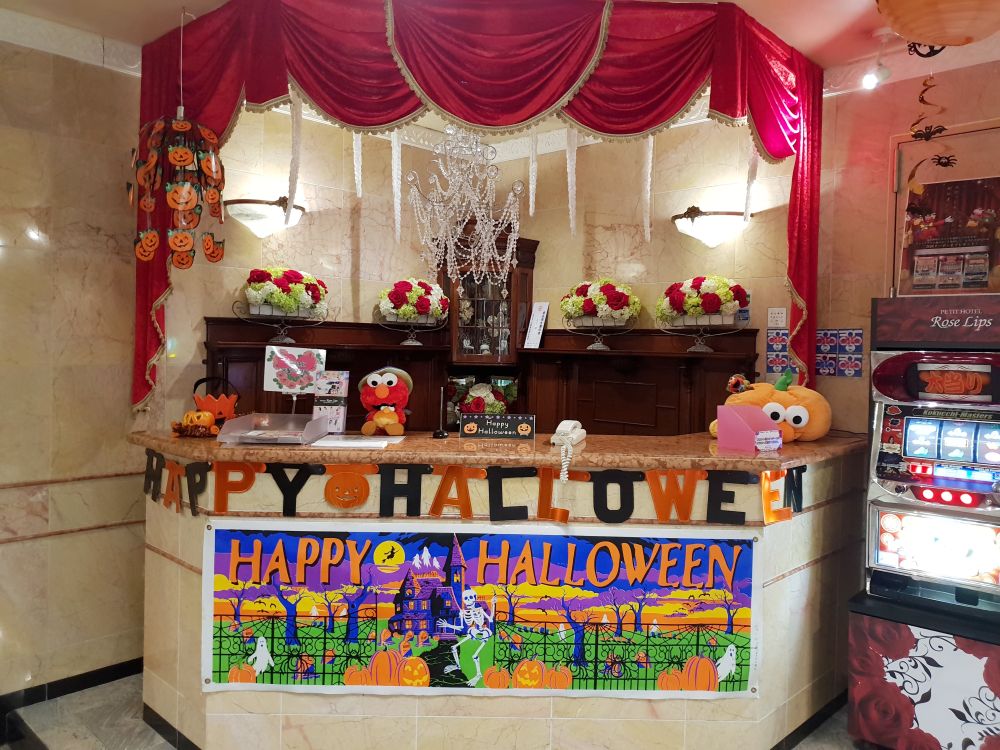
However, the lush, sometimes off-puttingly kitschy and chic rooms in love hotels are not only rented by couples looking for casual intimacy, but often by married couples too. They must be bored of the drabness of their tiny, unadorned bedrooms and occasionally spice up their married life with a night in a themed room. Condoms are part of the standard equipment, but sexy costumes and toys can also be hired. At the entrance you can often choose from a catalogue and pictures to find the room you fancy.
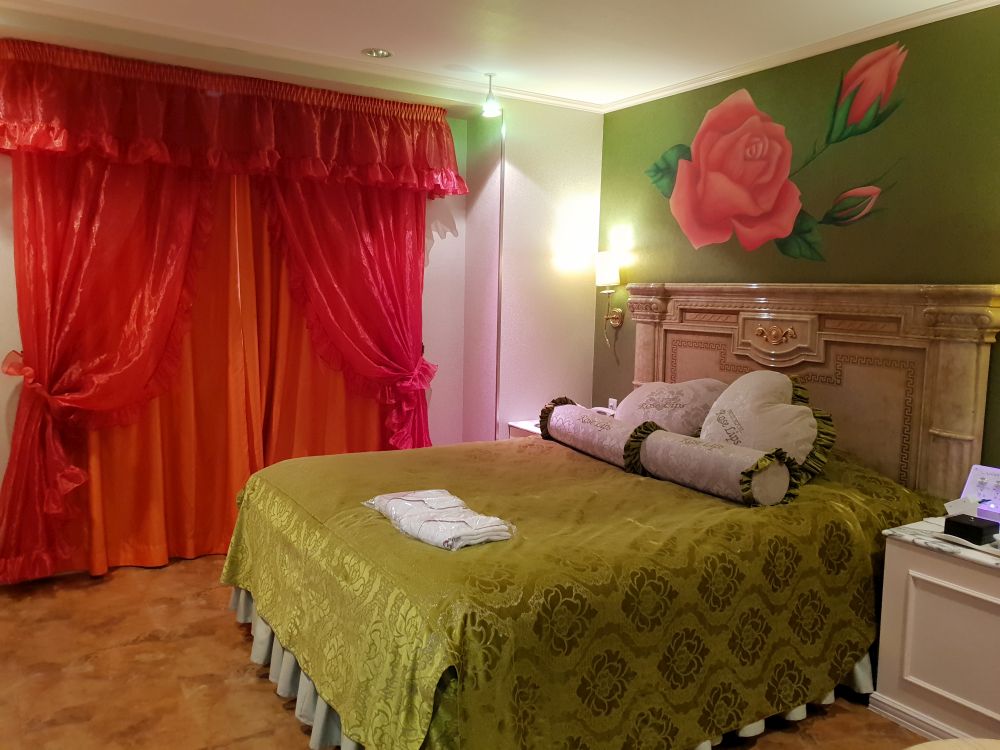
300-year old wooden house
Anyone who has ever seen a photo of Shirakawa Lake will not easily forget it and will definitely put it on their bucket list. The village, nestled in the hug of a mountain range known as the Japanese Alps, receives much more snowfall than average and has developed a very unique architectural style (gassho-zukuri). The houses, some 2-300 years old, are built of durable cedar wood, with unusually steep roofs designed to allow snow to slide off easily. The roofs are insulated by a thick layer of straw. To prevent it from drying out and being damaged by rodents and bugs, the lower floor of the house was on fire day and night, and the smoke reached the top floor thanks to the lattice floors.
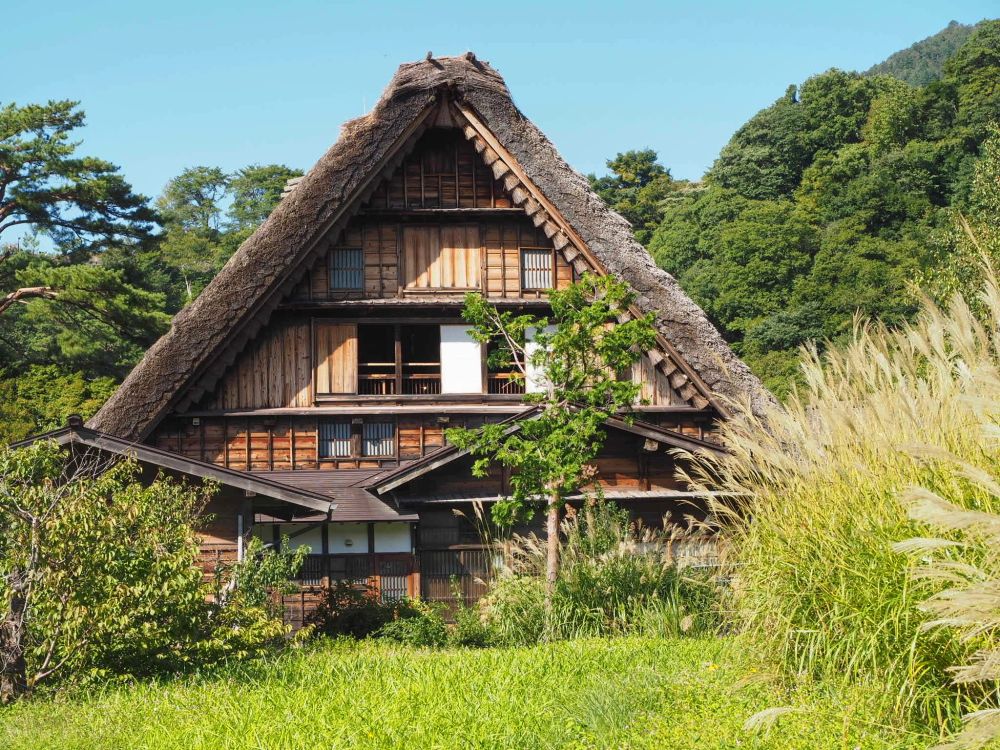
Capsules, love hotels and even Airbnb are unknown around here. In the village, which is a World Heritage Site, there are only traditional guesthouses, ryokan, and I stayed in a 300-year-old wooden house. The simple rooms are neat and tidy, with tatami and futon (mattress bed) on the floor, sliding doors on the walls and a shared bathroom. Guests are always given a robe (jukata) and slippers. The latter must be put on at the entrance, but in the bathroom you have to change into a pair of plastic slippers. On the way back, however, foreign tourists get confused about their footwear and, on leaving the toilet, are left wearing the plastic slippers – blue or pink – used in the wet rooms, until a member of staff in the corridor gently reminds them to change.
So sensitive to beauty, the Japanese naturally make sure that every room offers a magnificent view. I too was absorbed in the view of the garden until I was tactfully signaled to leave for dinner. In the small village, there are no restaurants open in the evening, and everyone eats dinner in their guest house, sitting together in a semi-circle. On the low wooden tables in front of everyone are a dozen or so small ceramic plates with carefully selected small dishes. I was the first to give up that evening, and after a while I switched from Japanese kneeling to the more comfortable Turkish sitting, but that’s allowed here.
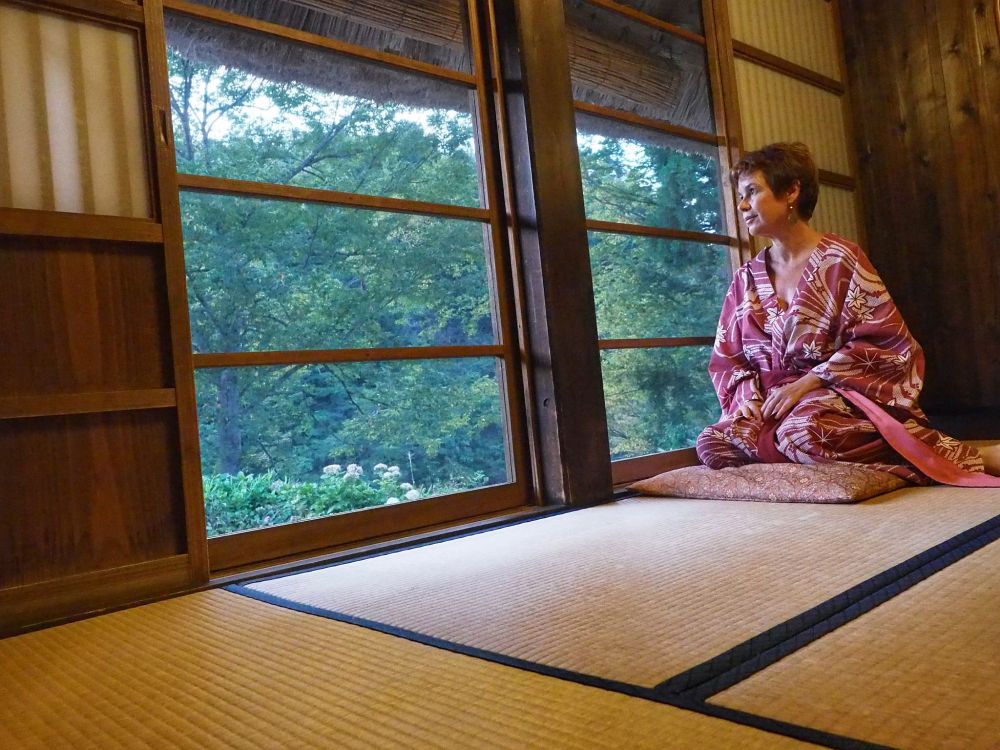
Temple stay
The only more special experience I had than this wonderfully intimate visit was a night in a temple (Shukubo). Temples open to outsiders are mainly found on Mount Koya (Koya-san) south of Osaka, which is the centre of the Singon Buddhist sect. In terms of population, this area has the highest density of temples in Japan, but with young people migrating to the cities and an ageing population in general, the number of locals to maintain these sacred sites is dwindling. At the same time, they are in trouble due to frequent typhoons and earthquakes, so the monks have decided to allow paying visitors. They have mastered the art of catering, and serve fine dining of almost international standard at their dinners, using strictly vegetarian ingredients of course. Despite the price tag of several hundred dollars, the room furnishings here are simple, spartan, so to speak, and the bathrooms are shared, but tourists have no complaints about the lack of Western luxury. They are happy to pay for the experience, as evidenced by the fact that although there are more than fifty temple hotels in the region, it is advisable to book at least a few weeks in advance.
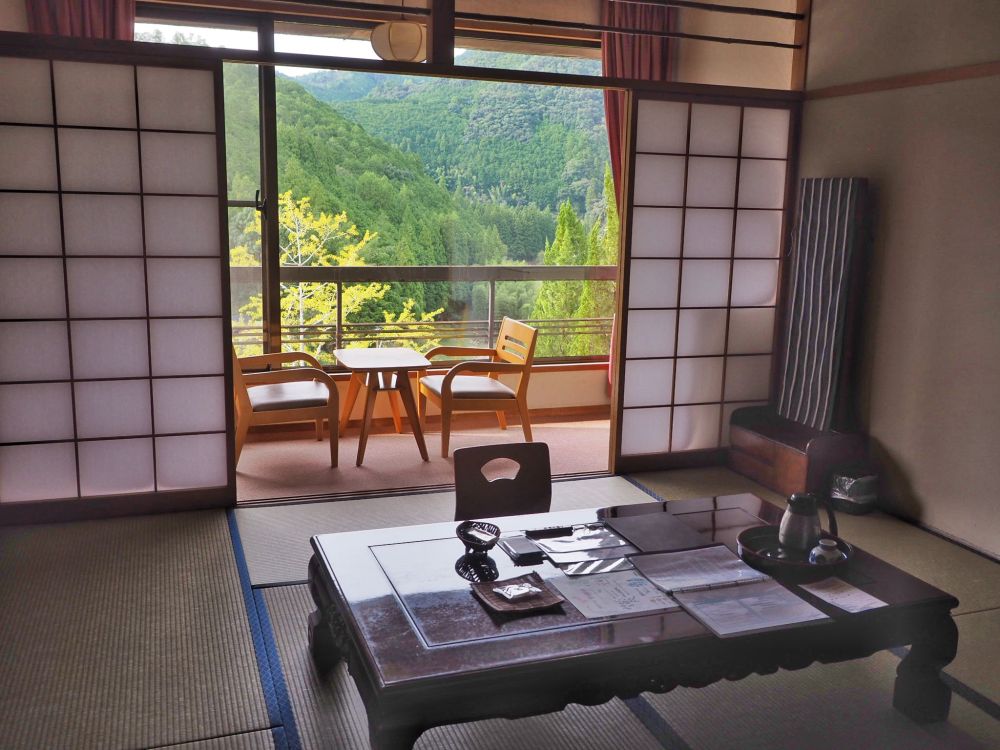
By the end of my six-week trip to Japan, it was clear why. I’d travelled a long way in every sense from Tokyo to Osaka, from the Park Hyatt skyscrapers to the capsules to the temples, and I’d spent perhaps the most memorable days of the whole trip in the pilgrim countryside. There’s something quite captivating about the tranquillity of the gardens surrounded by buildings, or the meditation at dawn that guests can join in. This tranquillity lasts for a while after returning home, and then inevitably fades at some point, but there remains an immense respect and love for Japan.

